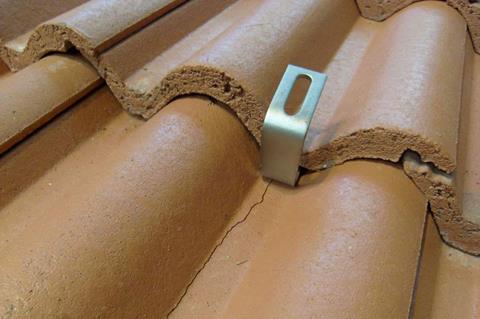The feed-in tariff will see an explosion in solar PV installations but no current standard can mean a wrong specification and a leaking roof
NHBC Foundations’ announcement that increased solar PV installations on roofs have led to more roofs leaking is not surprising. There have been these concerns within the roofing industry for some time, especially with regard to ’on top/roof’ solar PV systems and how they are fixed to roofs.
Thanks to the introduction of the feed in tariff (FIT) and subsequent explosion of solar PV installations the worry is that this technology becomes associated with causing leaky roofs. With green deal money on the horizon, the rate of solar PV installations could rise even further. In my opinion, it is vital that these procedures be carried out correctly using suitable products.

PV technology and installation methods imported from mainland Europe and further afield have not been specifically designed and tested for UK roofs. We need solar PV products and installation procedures that are tailored to our construction and climate. After all, the UK has the strongest wind in Europe and some of the heaviest rainfall.
A roof integrated solar PV system, which fits flush with the traditional roof tiles, should by definition be better at maintaining weather-tightness. Since the introduction of the FIT, the vast majority of PV systems installed have been of the ’on top’ variety. These bolt on top of the existing roof covering and do not form part of the roof covering.
One of the biggest causes of leakage associated with ’on top’ PV systems is where the tile immediately below the fixing hook cracks and breaks during its lifespan on the roof. This gives rise to an opportunity for water ingress. This is more often than not down to the actual design of the hook itself and how it integrates with the roof.
Other problems include fatigue loading on PV module fixings caused by gusting of wind over time.
Resulting repairs to the roof can be costly, requiring scaffold erection , removal of the PV modules, replacement of damaged tiles.
Other problems include fatigue loading on PV module fixings caused by gusting of wind over time. This results in the module fixings working loose on the roof, not ideal with such a valuable component. Again, this is commonly caused by poor design of the system itself and can be expensive to rectify.
NHBC Foundation correctly make the point that there is currently no European or British Standard regulating the mechanical installation of solar PV on buildings to ensure prevention of these problems caused by wind and rain.
Recognising this as such an important issue, the Microgeneration Certification Scheme (MCS) has developed some additional requirements for MCS-certified solar PV (and solar thermal) systems, in particular their mounting kits. The additional requirements relate specifically to weatherproofing and security against wind uplift, recently formalised in the new MCS 012 standard, as well as external fire resistance.
MCS 012 is set to come into force later this year and compliance with it should be the first point to check for anyone looking to specify solar PV systems for residential homes with pitched roofs. Long term, this should give assurance that houses built or re-furbished today with this technology should maintain weather-tightness for many years.
Richard Hartley is head of business development at Redland



























No comments yet